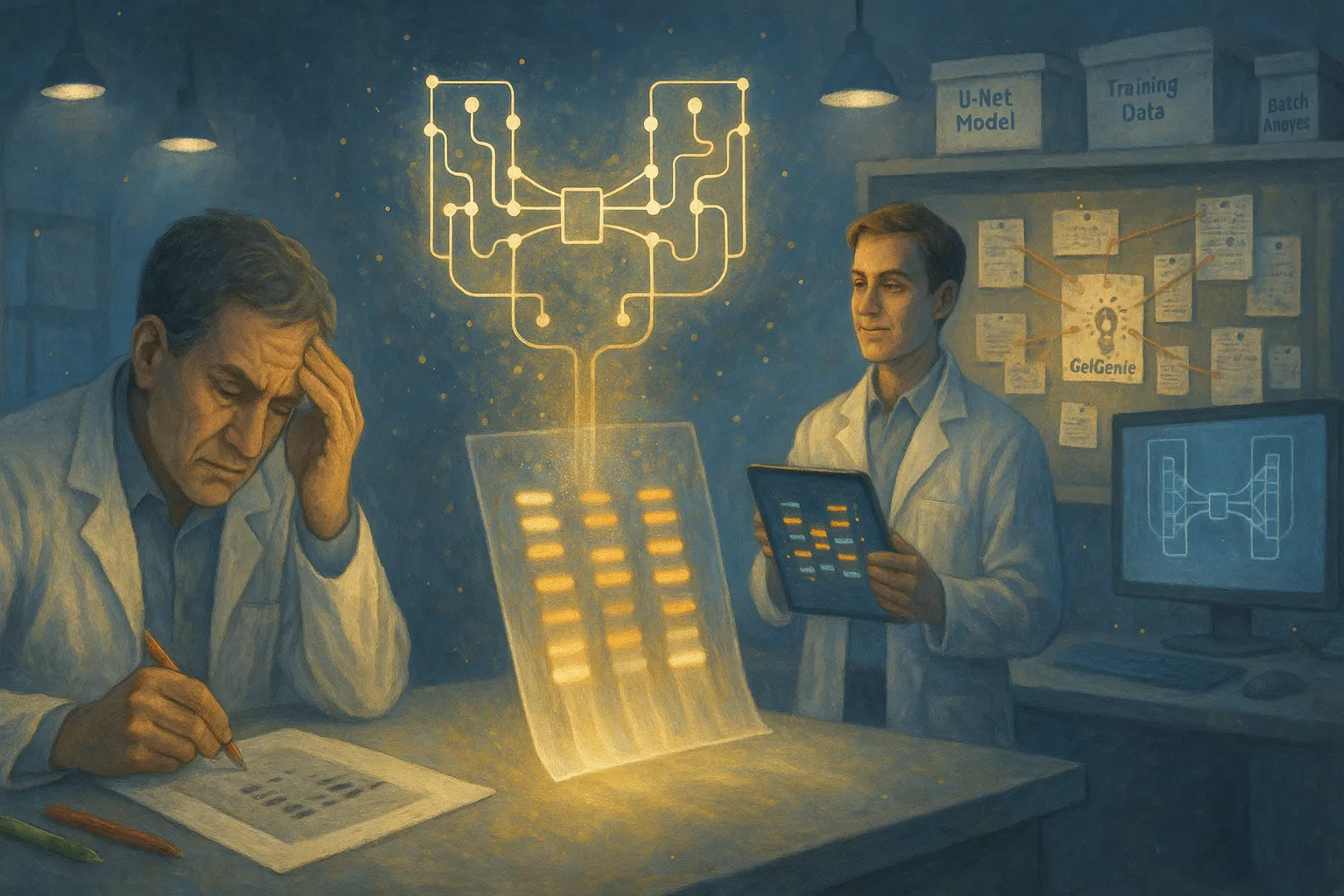AI Research
AI Tool Turbocharges Lab Analysis, Ends Scientists' Band-Spotting Blues
Explore how an innovative AI tool is transforming lab analysis, putting an end to the age-old problem of band-spotting for scientists.
For decades, scientists have relied on gel electrophoresis to separate and analyze DNA, proteins, and other molecules. The technique works like a molecular sieve, pushing particles through a gel matrix to create distinctive band patterns. While the method itself is elegant, analyzing the results has remained stubbornly archaic.
Researchers typically squint at grayscale images, manually marking each band – a tedious process that eats up valuable lab time. Software solutions exist, but they're finicky and often miss bands or generate false positives.
Enter GelGenie: The AI Band-Spotter
A University of Edinburgh team has finally dragged this analysis method into the AI era. Their new tool, GelGenie, spots gel bands automatically in seconds. The system outsmarts current software by taking a fundamentally different approach.
Instead of traditional methods that look for lanes first and then hunt for bands within them, GelGenie directly identifies bands anywhere in the image. This flexibility lets it handle messy real-world data that trips up other tools.
Teaching AI to See Like a Scientist
Lead author Matthew Aquilina and colleagues trained their AI on over 500 manually-labeled gel images. This diverse dataset taught the system to recognize bands in many scenarios – from pristine gels to messy ones with torn edges or contamination.
The team used a type of neural network called U-Net, originally developed for medical imaging. While gel analysis might seem simpler than spotting tumors in medical scans, the varied nature of lab data poses unique challenges.
Putting It to the Test
When tested against current tools, GelGenie matched or exceeded their accuracy while working much faster. It even handled tricky cases like warped bands and high background noise that confound traditional analysis methods.
The real test came when analyzing data from other labs. GelGenie successfully processed gel images from multiple published studies, generating results that matched the original authors' findings. When it encountered unfamiliar gel types, a quick retraining session with just 20 new images got it back on track.
User-Friendly Design
The team focused on making GelGenie practical for everyday lab use. The software runs on researchers' own computers without requiring special hardware or expertise. It works offline and integrates with existing lab image analysis tools.
At just 57 megabytes, the core AI model analyzes typical gel images in seconds. Users can adjust results manually if needed, and the system handles batch processing for large datasets.
Open Science Approach
The Edinburgh team has made both their software and training data freely available. This open approach lets other researchers use and improve the system. They've also published detailed instructions for labs wanting to retrain the AI on their specific types of gels.
Beyond Gels: A Broader Impact
While GelGenie targets a specific lab technique, it demonstrates how AI can modernize traditional scientific methods. The team suggests similar approaches could streamline other types of biological image analysis.
The work also showcases a practical way to implement AI in science – focusing on well-defined problems where automation can free up researchers' time for more creative work.
The Road Ahead
The team acknowledges room for improvement. Some very faint bands still elude the system, and certain specialized gel types might need additional training data. But GelGenie already offers a quantum leap over manual analysis.
Future updates could extend the system to handle two-dimensional gels and integrate with other lab automation tools. The open-source nature of the project means the scientific community can contribute to these improvements.
This humble gel analysis tool might not grab headlines like ChatGPT, but it represents the kind of practical AI application that's quietly transforming scientific work. By automating a common bottleneck in molecular biology labs worldwide, GelGenie gives researchers more time to focus on what matters: making new discoveries.
Why this matters:
- Labs worldwide run millions of gel analyses yearly. Automating this bottleneck could dramatically speed up research
- Finally drags a 40-year-old analysis method into the AI era, showing how machine learning can modernize classic lab techniques
Read on, my dear:








